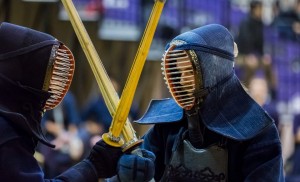I have been concerned for sometime regarding the AUSKF Kodansha examination pass rate and in particular the people trying for godan. As an examiner I would like to share some observations and hopefully some feedback to those testing.
Some Statistics
The pass rate for April 2012 through April 2013 is 15% success which is low compared to Japan where the rate averages about 20%. I think one reason is there are seminars provided in Japan before the test to help the candidates have a better chance of success. I hope AUSKF can develop such a program in the future to better serve the membership.
I am very concerned that many of the AUSKF candidates seem to stall out and have a lot of difficulty with these kodansha examinations. The pass rate in Japan for rokudan runs at about 13% and nanadan at about 10% but the situation and number testing with AUSKF is so different it would be difficult to compare. I intend to only address the godan test in this article but much of what I will present applies to rokudan and nanadan. The IKF or FIK has provided the basic criteria for the examiners and the candidates to understand the requirement of each level. These criteria are readily available but I wonder how many candidates have studied them.
YUDANSHA
Chakuso – Appearance
Reiho – Manners
Shisei – Posture
Kamae-Kata – Correct kamae
Ashi-Sabaki – Footwork
Kiai-Kakegoe -voice
Kihon Datotsu – Basic strikes
Maai – Proper distance
Zanshin- How they finish the strike
Kiken-Tai-ittchi – unification of offense and defense to create opportunity to strike
Datotsu no kikai – striking at the right moment
Waza

Putting It All Together
Now to put this all together, you need to look like the rank you are testing for, when you present yourself the judges they need to see a godan. If you think about this, often you can judge a persons rank just by how they look and take kamae. I have seen people come to the exam wearing old raggedy gear and or a brand new hakama that puffs out like a balloon.
The next point is basics for the level, footwork and strike are fully developed. No bunny foot, no goose step, no cheater step, swing and strike, handwork all correct and developed. The next point is where many fail even if the aforementioned is correct. Repeatedly striking aiuchi men, this means a failure of strategic skills to win a match. In application this means the seme and riai are missing.
No linking of waza, just aiuchi men over and over never making a clear, clean successful attack. If you analyze the Nihon no Kendo Kata it is the use of oji waza created through seme. In the successful passes the candidate does this in their keiko.
Finally it is your kendo, you own it and only you can fix it, change it and develop it. How many waza are in your tool box? If you can’t demonstrate it under the pressure of the exam match you don’t own that waza. I wish you success in your next examination.
Sincerely,
Jeff Marsten